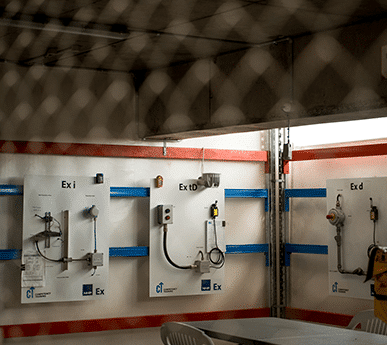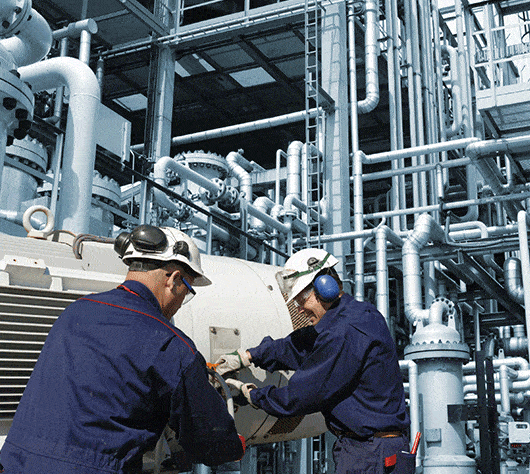Fascination About Roar Solutions
Fascination About Roar Solutions
Blog Article
The Main Principles Of Roar Solutions
Table of ContentsTop Guidelines Of Roar Solutions8 Easy Facts About Roar Solutions ShownThe 2-Minute Rule for Roar Solutions
In such an atmosphere a fire or explosion is possible when three standard conditions are fulfilled. This is commonly described as the "harmful location" or "combustion" triangle. In order to protect installments from a possible explosion a technique of analysing and categorizing a possibly harmful area is required. The objective of this is to make certain the proper option and setup of equipment to eventually stop an explosion and to make certain security of life.
(https://papaly.com/categories/share?id=f67ddeb126ff42bfb724a48f0cebd961)
No equipment ought to be set up where the surface area temperature of the devices is better than the ignition temperature level of the offered threat. Below are some common dust unsafe and their minimal ignition temperature level. Coal Dirt 380C 225C Polythene 420C (thaws) Methyl Cellulose 420C 320C Starch 460C 435C Flour 490C 340C Sugar 490C 460C Grain Dirt 510C 300C Phenolic Material 530C > 450C Aluminium 590C > 450C PVC 700C > 450C Soot 810C 570C The probability of the danger existing in a concentration high sufficient to create an ignition will differ from place to place.
In order to classify this threat an installation is separated right into areas of risk relying on the quantity of time the dangerous is present. These areas are referred to as Areas. For gases and vapours and dusts and fibres there are 3 zones. Zone 0 Zone 20 A harmful atmosphere is very likely to be existing and may exist for long durations of time (> 1000 hours per year) or perhaps constantly Zone 1 Zone 21 A hazardous ambience is feasible however not likely to be existing for lengthy periods of time (> 10 450 C [842 F] A classification of T6 means the minimal ignition temperature is > 85 C [185 F] Dangerous location electric equipment perhaps designed for use in higher ambient temperature levels. This would certainly indicated on the ranking plate e.g. EExe II C T3 Ta + 60C( This suggests at 60C ambient T3 will not be exceeded) T1 T1, T2, T3, T4, T5, T6 T2 T2, T3, T4, T5, T6 T3 T3, T4, T5, T6 T4 T4, T5, T6 T5 T5, T6 T6 T6 A T Course score of T1 suggests the optimum surface temperature level created by the tool at 40 C is 450 C. Thinking the associated T Course and Temperature ranking for the equipment are ideal for the area, you can always use an instrument with an extra strict Department ranking than required for the location. There isn't a clear response to this inquiry regrettably. It really does depend on the kind of devices and what repairs need to be performed. Equipment with specific examination treatments that can not be performed in the field in order to achieve/maintain 3rd party ranking. Should come back to the manufacturing facility if it is before the tools's service. Field Repair Service By Authorised Employee: Complicated testing may not be needed nonetheless details procedures may require to be followed in order for the equipment to maintain its 3rd party rating. Authorised workers must be utilized to carry out the work properly Fixing need to be a like for like substitute. New part need to be thought about as a straight substitute needing no special testing of the devices after the repair is full. Each tool with a hazardous ranking should be assessed independently. These are described at a high level listed below, however, for even more thorough info, please refer straight to the standards.
8 Easy Facts About Roar Solutions Shown
The tools register is a thorough database of equipment records that consists of a minimum set of fields to identify each item's place, technological specifications, Ex-spouse classification, age, and environmental data. This information is crucial for tracking and handling the equipment successfully within unsafe areas. In contrast, for regular or RBI sampling assessments, the quality will certainly be a combination of In-depth and Close assessments. The proportion of Comprehensive to Close examinations will certainly be identified by the Devices Danger, which is evaluated based on ignition threat (the chance of a resource of ignition versus the probability of a flammable atmosphere )and the harmful area category
( Zone 0, 1, or 2). This variation will certainly likewise influence the resourcing needs for job preparation. As soon as Whole lots are defined, you can establish sampling plans based on the example dimension of each Lot, which describes the number of random tools products to be examined. To identify the called for example dimension, two facets need to be evaluated: the dimension of the Lot and the classification of examination, which suggests the degree of initiative that should be applied( lowered, typical, or increased )to the examination of the Lot. By combining the classification of examination with the Whole lot dimension, you can then develop the suitable rejection criteria for a sample, suggesting the allowed number of malfunctioning products discovered within that example. For even more information on this procedure, please refer to the Energy Institute Standards. The IEC 60079 basic recommends that the maximum period in between assessments need to not go beyond 3 years. EEHA assessments will certainly likewise be carried out outside of RBI campaigns as component of arranged upkeep and equipment overhauls or repairs. These examinations can be credited toward the RBI sample dimensions within the impacted Lots. EEHA inspections are carried out to determine faults in electric devices. A weighted racking up system is crucial, as a solitary item of equipment might have numerous mistakes, each with varying degrees of ignition threat. If the consolidated score of both examinations is much less than two times the mistake score, the Whole lot is considered acceptable. If the Lot is still considered undesirable, it has to go through a full examination or validation, which might trigger more stringent evaluation methods. Accepted Whole lot: The root causes of any kind of mistakes are identified. If a typical failure setting is discovered, added devices might require inspection and fixing. Faults are identified by intensity( Safety, Honesty, Housekeeping ), ensuring that urgent concerns are evaluated and addressed immediately to mitigate any kind of effect on safety and security or operations. The EEHA data source ought to track and videotape the lifecycle of faults together with the rehabilitative actions taken. Carrying out a durable Risk-Based Evaluation( RBI this post )method is essential for making sure conformity and safety and security in handling Electrical Tools in Hazardous Areas( EEHA) (hazardous area electrical course). Automated Fault Scoring and Lifecycle Management: Effortlessly handle mistakes and track their lifecycle to boost inspection accuracy. The introduction of this support for risk-based inspection even more enhances Inspectivity's setting as a best-in-class service for regulative compliance, in addition to for any asset-centric evaluation use situation. If you are interested in discovering more, we invite you to request a demonstration and discover just how our remedy can change your EEHA monitoring procedures.
Roar Solutions Can Be Fun For Everyone

In terms of explosive risk, a dangerous area is an environment in which an eruptive ambience exists (or might be expected to be present) in amounts that call for special precautions for the construction, installation and usage of equipment. eeha certificate. In this short article we discover the difficulties encountered in the workplace, the risk control measures, and the called for expertises to work securely
These substances can, in specific conditions, develop eruptive atmospheres and these can have significant and awful effects. Many of us are acquainted with the fire triangular remove any type of one of the 3 components and the fire can not occur, however what does this mean in the context of unsafe areas?
In many instances, we can do little concerning the degrees of oxygen airborne, yet we can have significant influence on sources of ignition, for instance electric devices. Harmful locations are recorded on the dangerous area classification illustration and are recognized on-site by the triangular "EX LOVER" sign. Below, amongst other essential details, areas are divided right into 3 kinds relying on the hazard, the likelihood and duration that an explosive atmosphere will exist; Zone 0 or 20 is deemed the most dangerous and Zone 2 or 22 is deemed the least.
Report this page